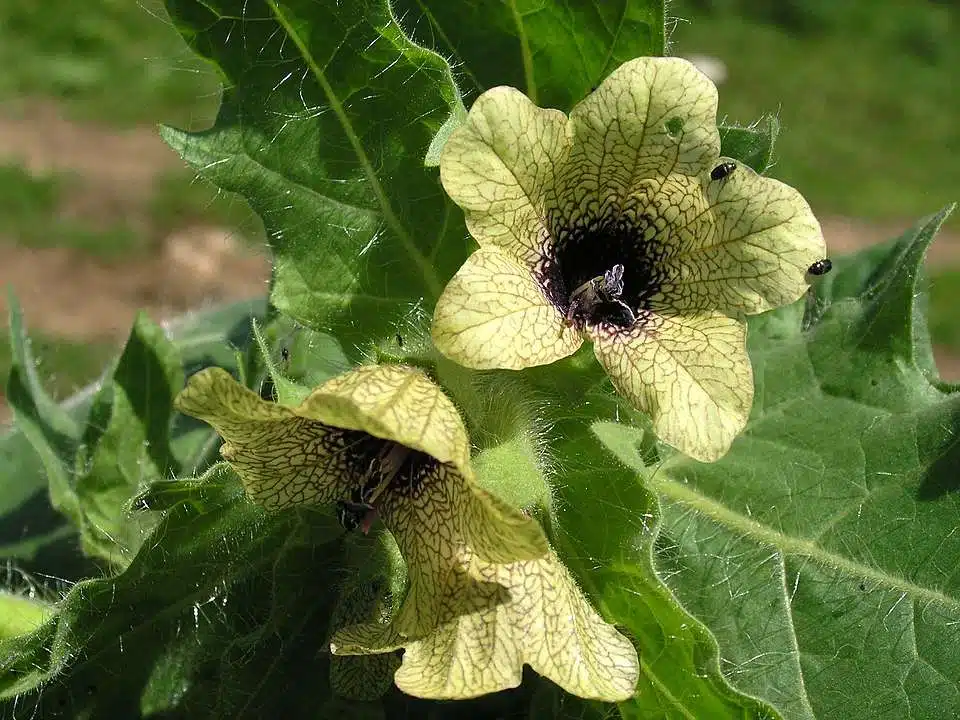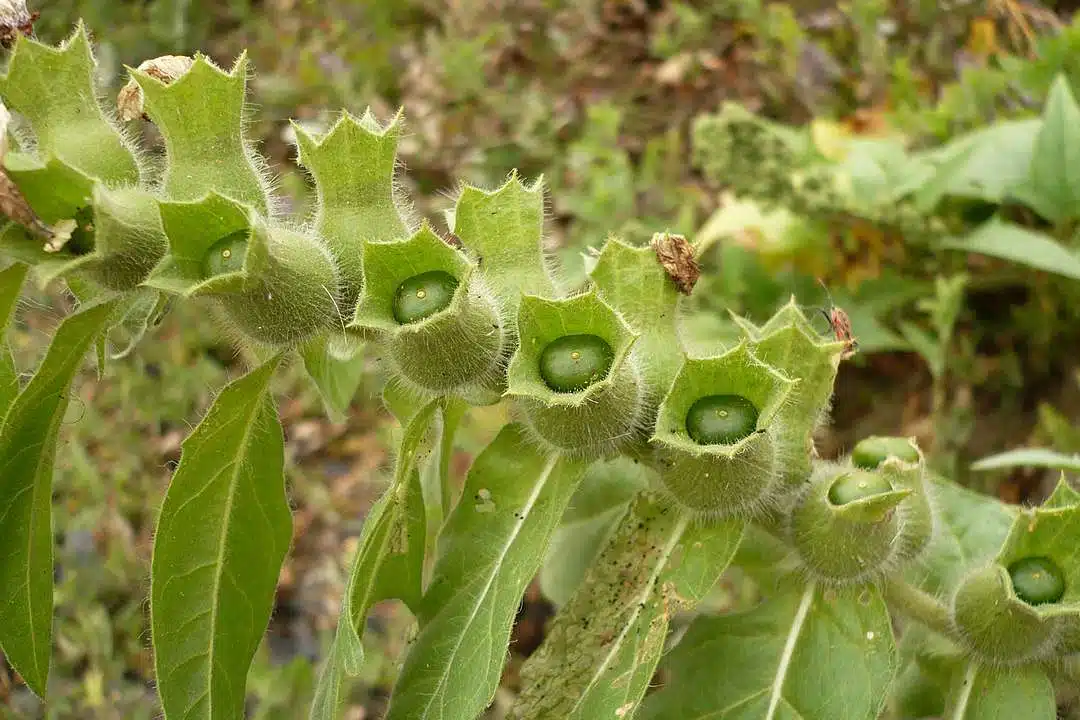Unraveling the Threats and Challenges of this Toxic Weed in Alberta's Green Spaces
The Dark Side of Alberta's Flora: The Spread of Black Henbane

In the province of Alberta, Canada, a growing concern has taken root—Black Henbane (Hyoscyamus niger). This invasive and toxic plant, a part of the nightshade family, has been increasingly observed in green spaces across Alberta, particularly in Calgary and Airdrie. With its bell-shaped yellow flowers and distinctive purple veins, Black Henbane in Alberta, native to Eurasia, is drawing attention not for its beauty, but for its potential harm and relentless proliferation.
Black Henbane, a noxious weed, has been thriving in Calgary's green spaces, with the recent rain only helping boost its growth. This uptick in its presence is not limited to Calgary; Airdrie too has been witnessing an increase in the presence of Black Henbane, especially in poorly established landscapes or where soil has been disrupted.
Potential harm and relentless proliferation

Invasive specie take root
The plant poses a dual threat. Alongside its invasive behavior, Black Henbane carries a potent toxicity. Its tropane alkaloids, if consumed, can lead to severe poisoning with symptoms ranging from hallucinations to seizures, and in extreme cases, death. Additionally, it's known to irritate the skin upon contact, adding another layer to its harmful nature.
In response to these challenges, proactive measures have been taken in both Calgary and Airdrie. The city administration in Airdrie has encouraged residents to participate actively in combating the spread of this weed. They've been advised to pull the plant from its root, bag it, and dispose of it in their garbage. Precautions have also been issued to avoid skin contact and report sightings of Black Henbane in public spaces to the Parks department.
However, the battle against this noxious weed isn't merely a physical one—it's also a battle of awareness. Many might not recognize Black Henbane if they stumbled upon it. The plant is identifiable by its tall, thick stem, large light green leaves, and showy yellow flowers with purple veins and throats. By promoting recognition of this plant, cities hope to effectively engage the public in their efforts to control its spread.
The proliferation of Black Henbane in Alberta is a stark reminder of the delicate balance within our ecosystems. When an invasive species takes root, it can disrupt the native flora and fauna, potentially leading to long-term ecological changes. While Black Henbane's bell-shaped flowers may seem attractive, its invasive nature and toxicity pose significant challenges.
Community participation is critical in the face of this threat. Every resident who can identify and safely remove a Black Henbane plant contributes to the collective effort. As the cities of Calgary and Airdrie have shown, this is a challenge that requires the commitment of not just government agencies but every individual.
In the end, the battle against Black Henbane in Alberta is not just about preserving the beauty of our green spaces—it's about protecting the health and safety of our communities, our pets, and our local wildlife. It's a battle that underlines the importance of being vigilant about the plants in our environment, and the impacts they can have on the local ecosystem. Together, by staying informed and taking proactive measures, we can help curb the spread of this noxious weed and safeguard our precious landscapes.
This tale of Black Henbane in Alberta is a reminder that every plant in our surroundings has a story—sometimes beautiful, sometimes useful, and sometimes perilous. Let's make sure we know which is which, and act to maintain the balance in our local environments.
Please note: If you suspect that you or your pet have come into contact with Black Henbane, seek professional medical or veterinary help immediately. Always exercise caution when handling unknown plants, especiallythose that are known to be toxic.

2 Comments on “Black Henbane in Alberta: An Invasive, Noxious Weed on the Prowl”
Dispose of in garbage “not bio recycling” important correction no?
Since it is biennial if it is mowed are weed whipped short it won’t produce seed and dye this year. If done each year, in about 4 years there should be no viable seeds left in the soil. Is this analysis correct?